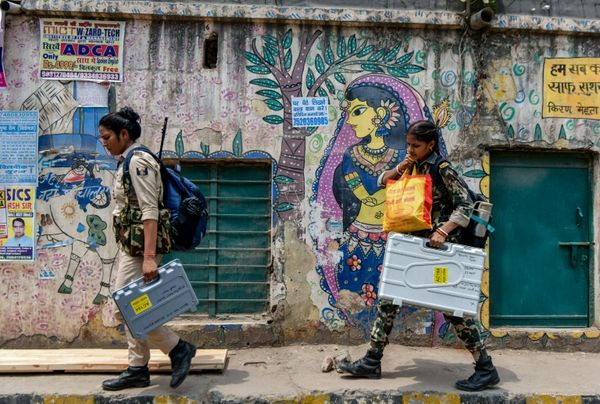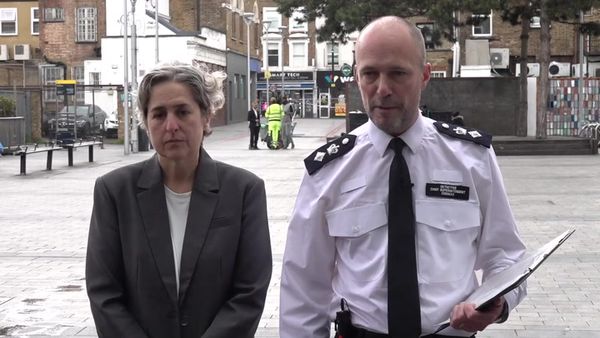Two accidents in quick succession involving buses belonging to the Andhra Pradesh State Road Transport Corporation (APSRTC) fleet on November 6 call attention to the maladies that have been obstructing the smooth functioning of the public sector giant.
Ahead of the World Day of Remembrance for Road Traffic Victims on the third Sunday of November, the accidents are a sort of reminder for the APSRTC for any possible correction.
It was a bad Monday morning for the three victims — an outsourced employee of the RTC, a woman from Chirala and a toddler, who were crushed under the bus that crashed into platform number 12 at Pandit Nehru Bus Station. Two others were injured in the incident. The same night, another State-owned bus from Hindupur depot rammed into a few vehicles, killing one person on the spot and critically injuring two others, near the Collector’s office in Anantapur.
Also read | Bus accident at Pandit Nehru Bus Station in Vijayawada was due to human error, reveals inquiry
Every such accident is a notice that something is wrong with men, methods or materials. The APSRTC is no exception. Maladies like fund crunch, shortage of staff and infrastructure have not allowed the State bus network to grow fast enough to cater to the ever-increasing volume of passengers, a fact that came in handy for private bus companies to deploy their services illegally even in routes earmarked for operation of the State buses.
Challenges abound. The immediate one is to steer the troubled Corporation out of its financial woes. Officials at the helm have had to devise innovative policies to shore up the revenues and their attempts showed positive results. The revenue losses accumulated by the APSRTC over the years are on a declining trend. From ₹6,445 crore of losses in 2019, the amount has come down to ₹3,275 crore now. Out of this total amount, ₹2,217 crore accounts for loans and ₹1,058 crore for the dues to be paid to the employees.
The APSRTC management also pays 25% of its monthly revenue to the government as part of the revenue-sharing agreement reached at the time of the merger of its 51,488 employees with the government. The RTC employees were taken into the fold of the newly-created Public Transport Department on January 1, 2020, and they receive their salaries directly from the government, a move that incurred an additional monthly expenditure of ₹300 crore to the exchequer.
Ironically, the merger, seen by the RTC employees as a panacea for all their problems in the past, has turned into a sore point now. Their joy was short-lived, with the government announcing its decision to scrap facilities like the Staff Retirement Benefit Scheme (SRBS) and Staff Benevolent Trust (SBT), and bus pass provision. Within 45 days of celebrating the merger, the employees staged a protest, arguing that assimilation of the RTC staff in the government should not mean depriving them of the existing facilities and demanding additional benefits.
Alleging that workers are under duress, the Public Transport Department (formerly APSRTC) Employees Union has been urging the management to recruit drivers instead of relying on outsourced staff. The officials are learnt to have flagged up the issue, seeking permission from the government to recruit 4,000 drivers. The union leaders, however, say there is an immediate need to induct around 10,000 staff in various departments.
The transport wing workers also resent the inordinate delay in payment of arrears under various heads. Payment of their leave encashment has been pending for the past three years, gratuity fund has been stopped for the deceased, retired and medically unfit employees who were asked to retire, since January 2020, and night shift and overtime allowances have also not been paid since September last year. The employees are also waiting for payment of DA arrears for 18 months, from January 2022.
Restoration of the old system of medical services through a chain of referral hospitals is what the employees are insisting on. They now come under the State-sponsored Employees Health Scheme (EHS) and do not find it as satisfactory as the earlier system.
Pitted against the odds, the State Transport Corporation has been operating a fleet of 10,904 buses (8,246 RTC buses and 2,658 hired buses) from its 129 depots across the State with a daily volume of 40 lakh km, carrying 40 lakh passengers every day. The APSRTC vehicles connect 14,123 villages on the 1,423 routes in the State and the current daily revenue of the State-owned transport corporation is ₹15 crore.
Officials at the helm have struggled over the years to do a balancing act. The government’s obligation as the basic service provider stands in the way of increasing fares while a private sector player does it overnight to keep afloat. The officials see as a double whammy their inability to hike ticket fares and having to deal with the burden of the ever-increasing fuel prices and the huge manpower costs.
Though the officials realise the dire need to increase the size of the RTC fleet, their hands are tied. The fact that the area-wise operations by RTC buses have shrunk from 40 lakh km in the past to 38 lakh km now is a cause of serious concern for them.
The government needs to take a long, hard look at the issues and initiate policy-level reforms to build a resilient ecosystem for the State transport sector to thrive.





